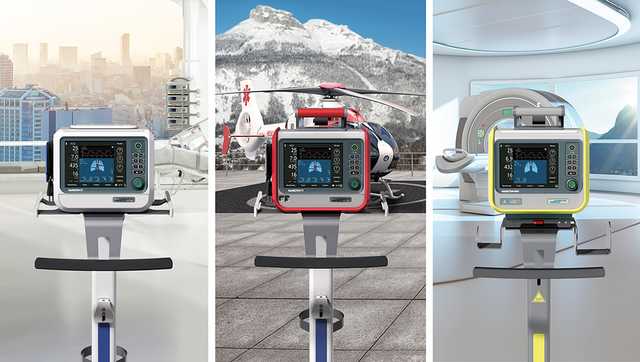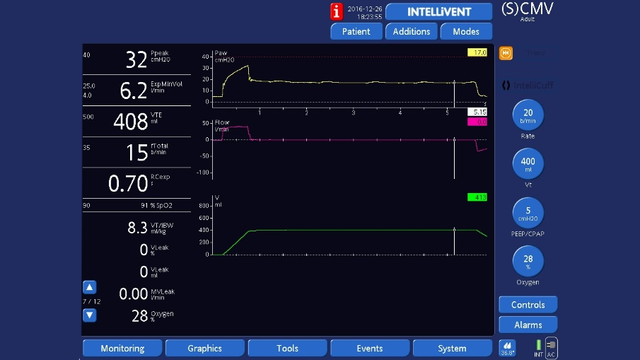
Auteur: Simon Franz
Date: 14.07.2017

Même si l'idée d'une pression plateau sûre est déjà remise en cause, elle reste encore une norme de soins à utiliser pour adapter la ventilation protectrice chez des patients en détresse respiratoire aiguë (SDRA).
Comme le système pneumatique des ventilateurs HAMILTON-C1/T1/MR1 ne comporte pas de valve, il est impossible d'obtenir la P plateau en réalisant une manœuvre de pause inspiratoire. Néanmoins, la P plateau est toujours disponible comme paramètre de monitorage et peut être affichée en fonction du logiciel de votre ventilateur.
| HAMILTON-C1/T1/MR1 SW < v2.2.0 | HAMILTON-C1/T1/MR1 SW ≥ v2.2.0 |
|---|---|
| Pression de fin d'inspiration toujours affichée comme la P plateau. Veuillez prendre en compte le fait qu'en cas de débit de fin d'inspiration, la P plateau affichée est supérieure à la P plateau réelle. | La P plateau s'affiche uniquement si le débit de fin d'inspiration est proche de zéro. La P plateau affichée peut encore être supérieure à la P plateau réelle. |
Une solution possible pour calculer la P plateau dans des cas où le débit de fin d'inspiration n'est pas proche de zéro ou la pression mesurée en fin d'inspiration ne semble pas précise :
Ce calcul dépend de la précision de la mesure de la C Stat, ce qui signifie que le patient ne produit aucun effort important. La Pinsp doit être d'au moins ~10 cmH2O.
P plateau = (VTE ml / C Stat ml/cmH2O) + PEP cmH2O
Exemple
VTE : 450 ml ; C Stat : 50 ml/cmH2O ; PEP : 8 cmH2O
(450 ml/50 ml/cmH2O) + 8 cmH2O = 17 cmH2O
P plateau = 17 cmH2O
∆P = 9 cmH2O
L'autre avantage est l'obtention de la ∆P comme produit secondaire de vos calculs. La ∆P est fortement associée à la survie des patients SDRA et peut par conséquent être le paramètre le plus intéressant.
Dispositifs concernés : HAMILTON-C1/T1/MR1 (toutes les versions logicielles)

ARDS is characterized by lung collapse and consolidation leaving just a small portion of aerated lung remaining, which is at risk of ventilator-induced lung injuries (baby-lung concept).

Airway driving pressure is associated with clinical outcomes in ARDS, post-surgical, and normal-lung patients, and is a measure of the strain applied to the respiratory system and the risk of ventilator-induced lung injuries. Evidence suggests we should keep driving pressure below 14 cmH2O. But how can we measure it?